Farley Aguilar - The Age of Effluence
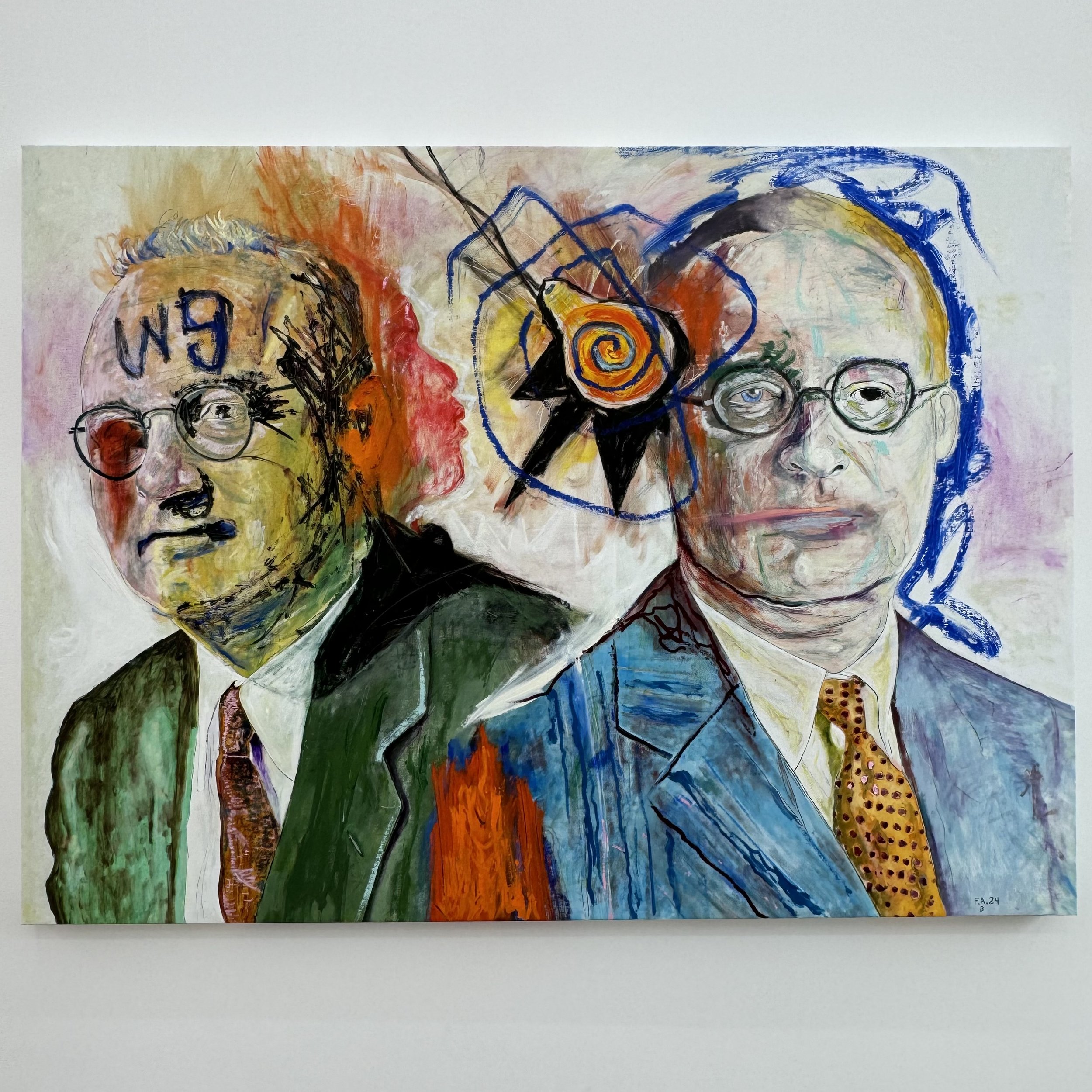
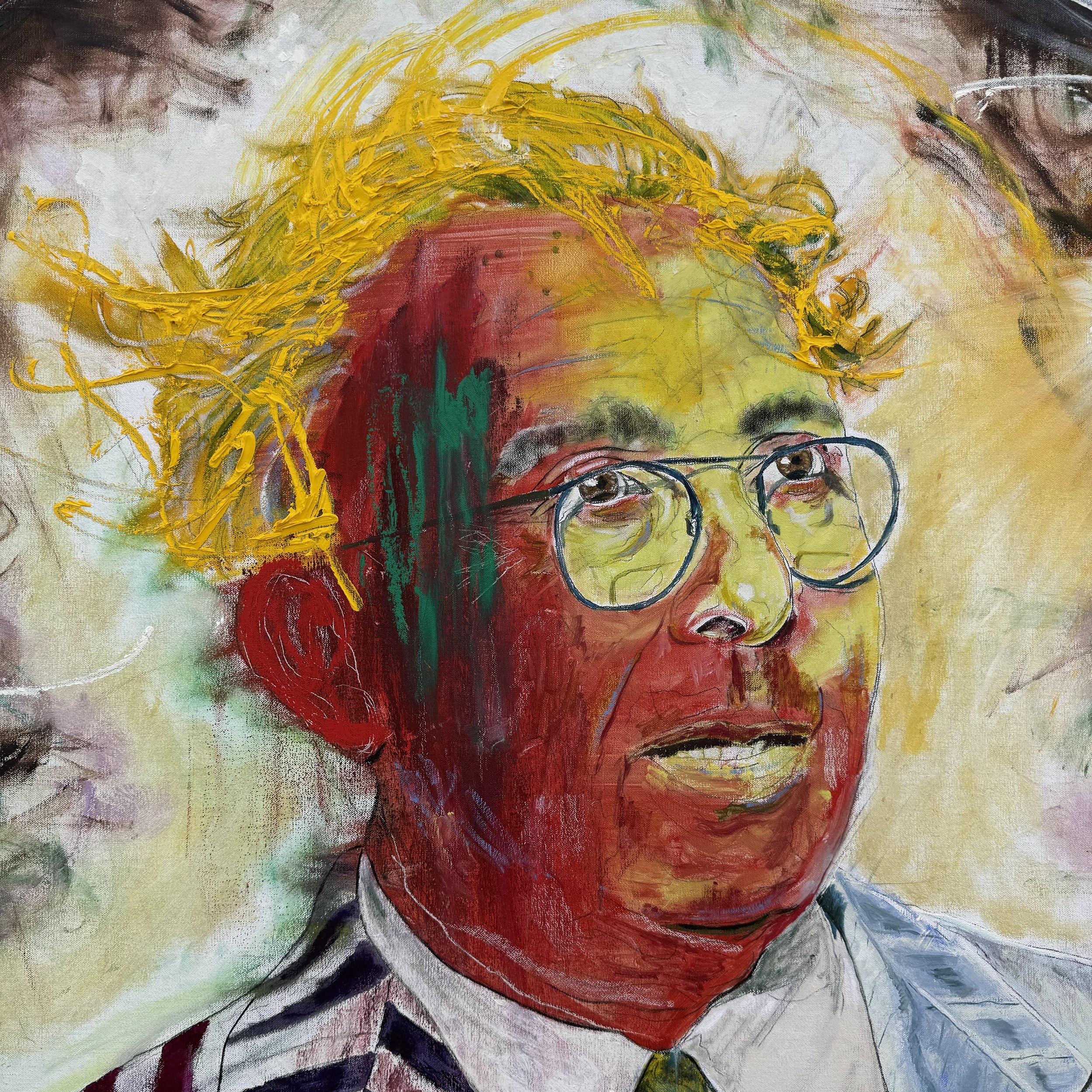
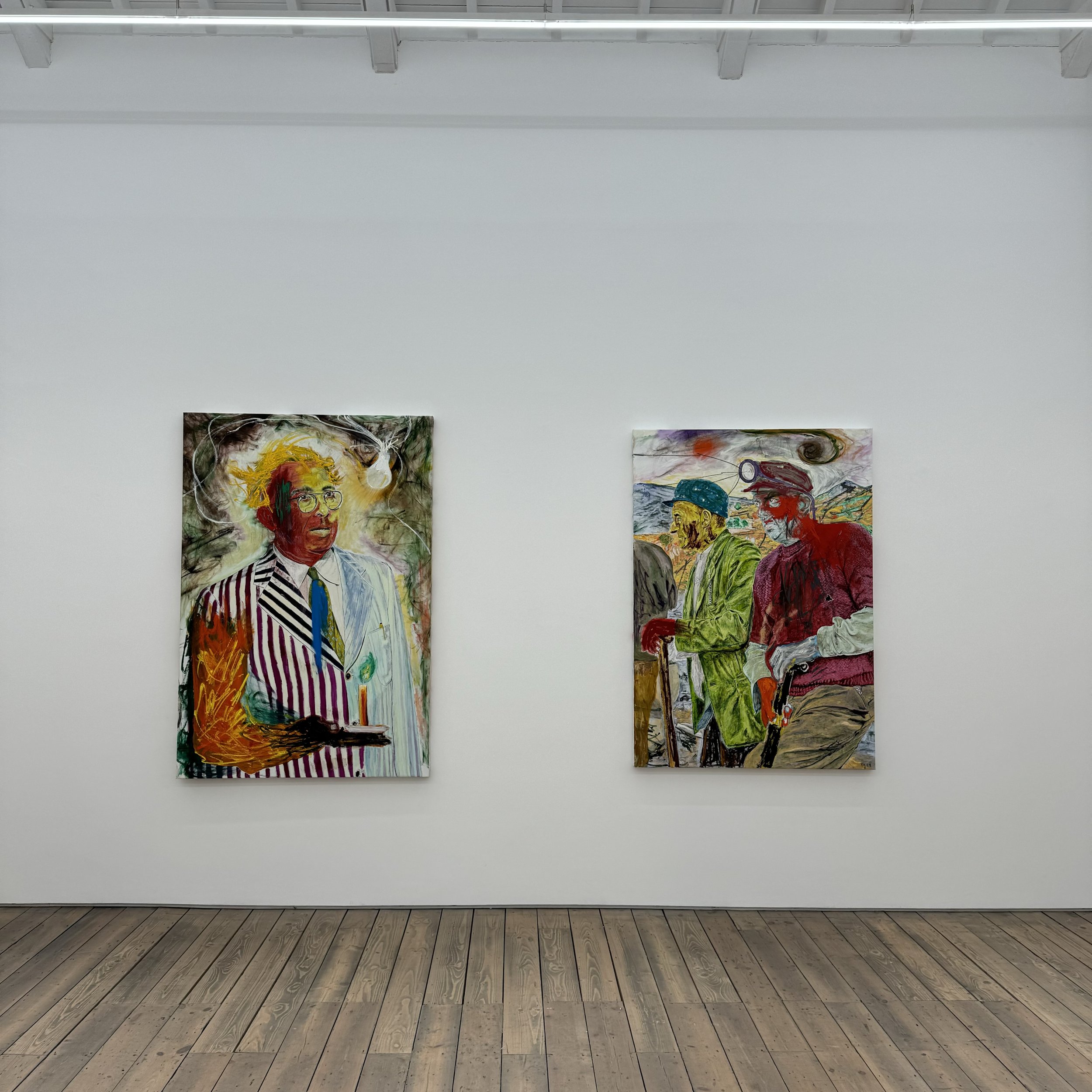

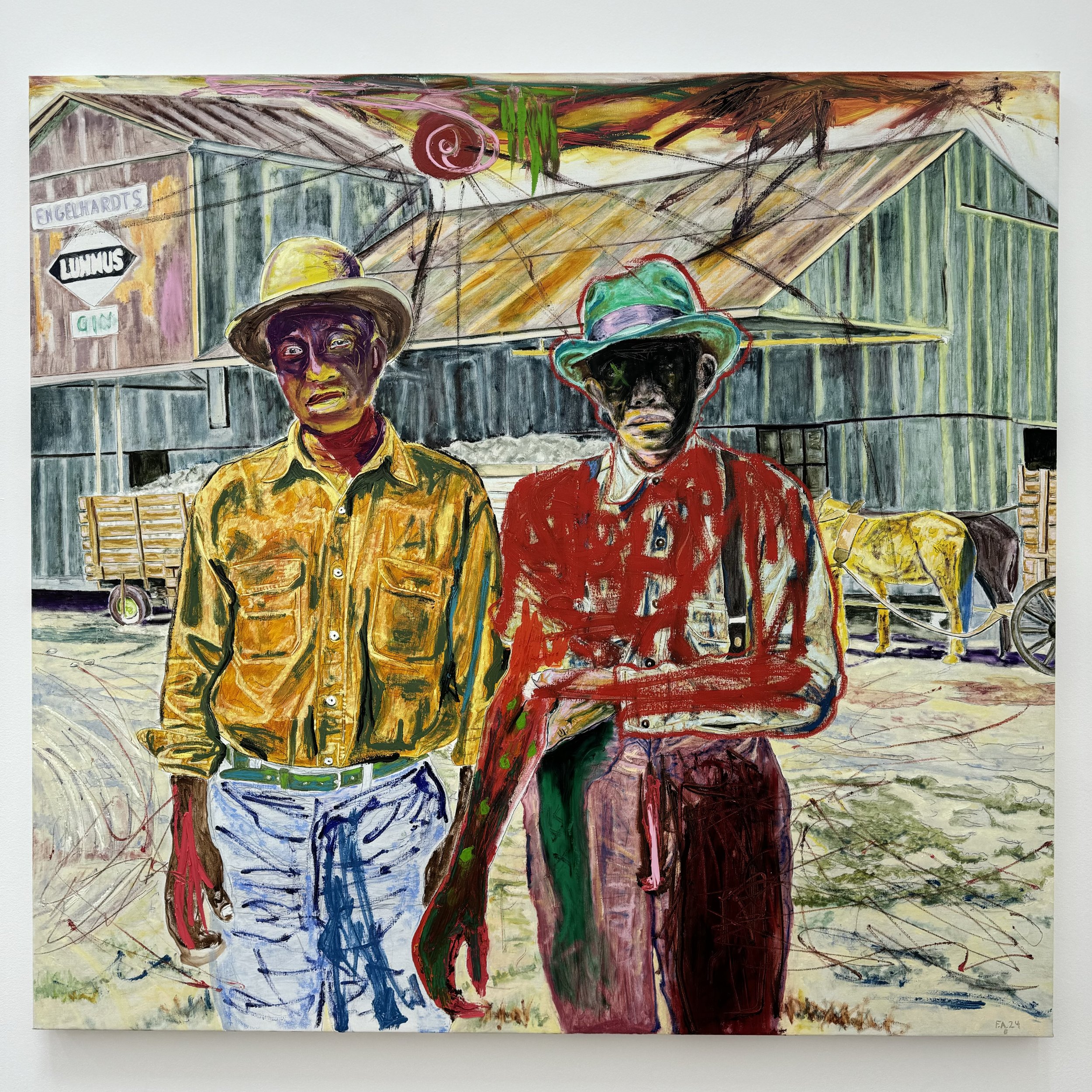
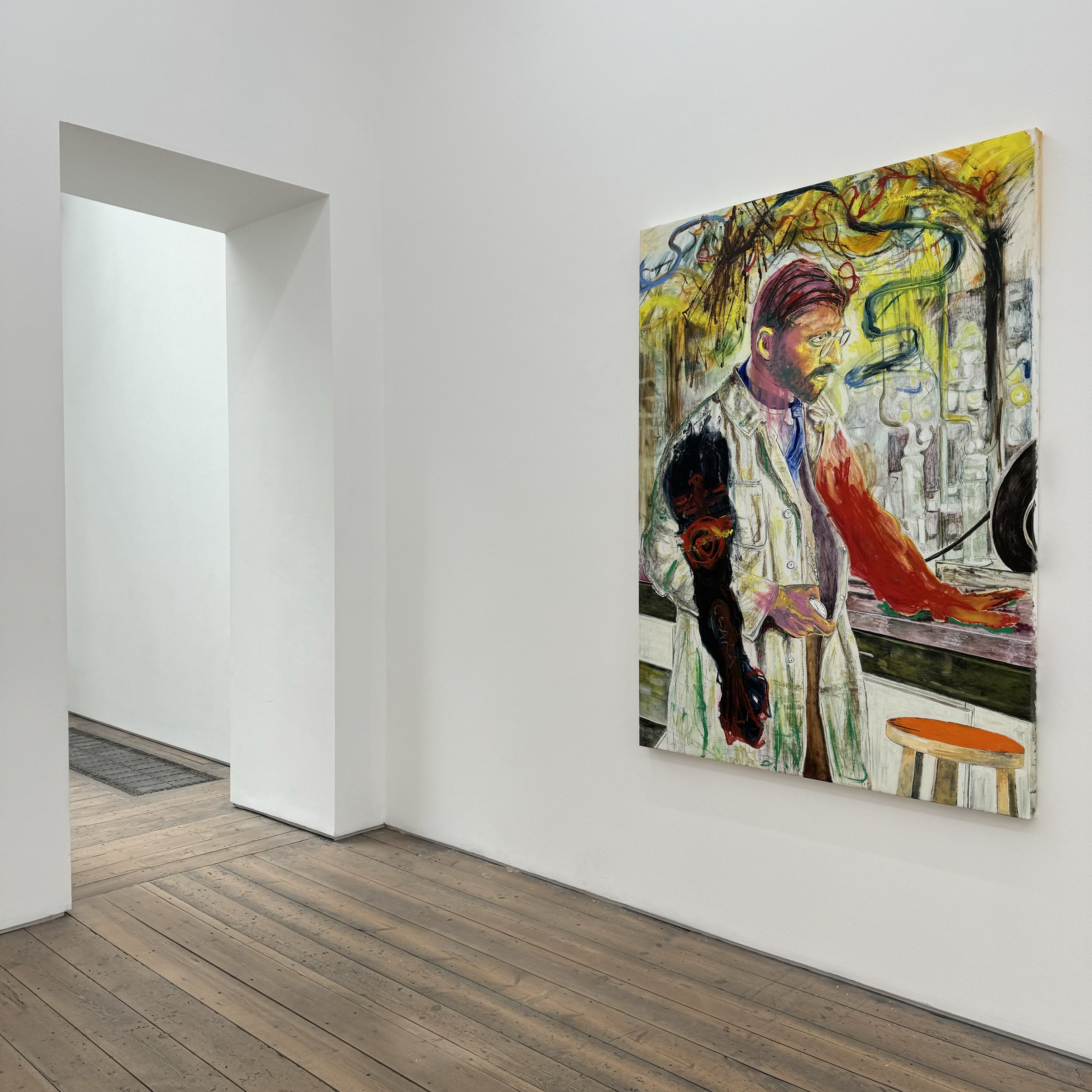
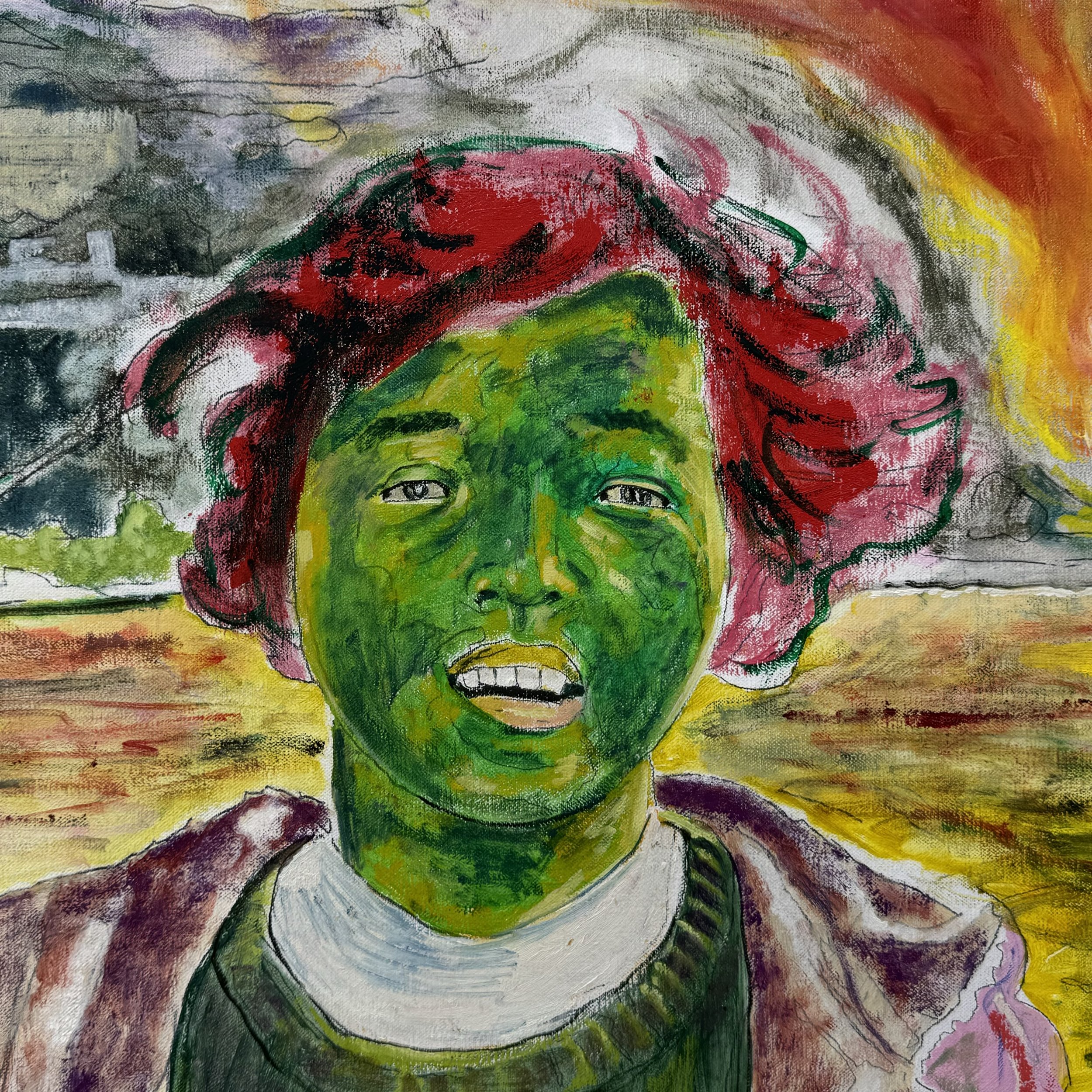
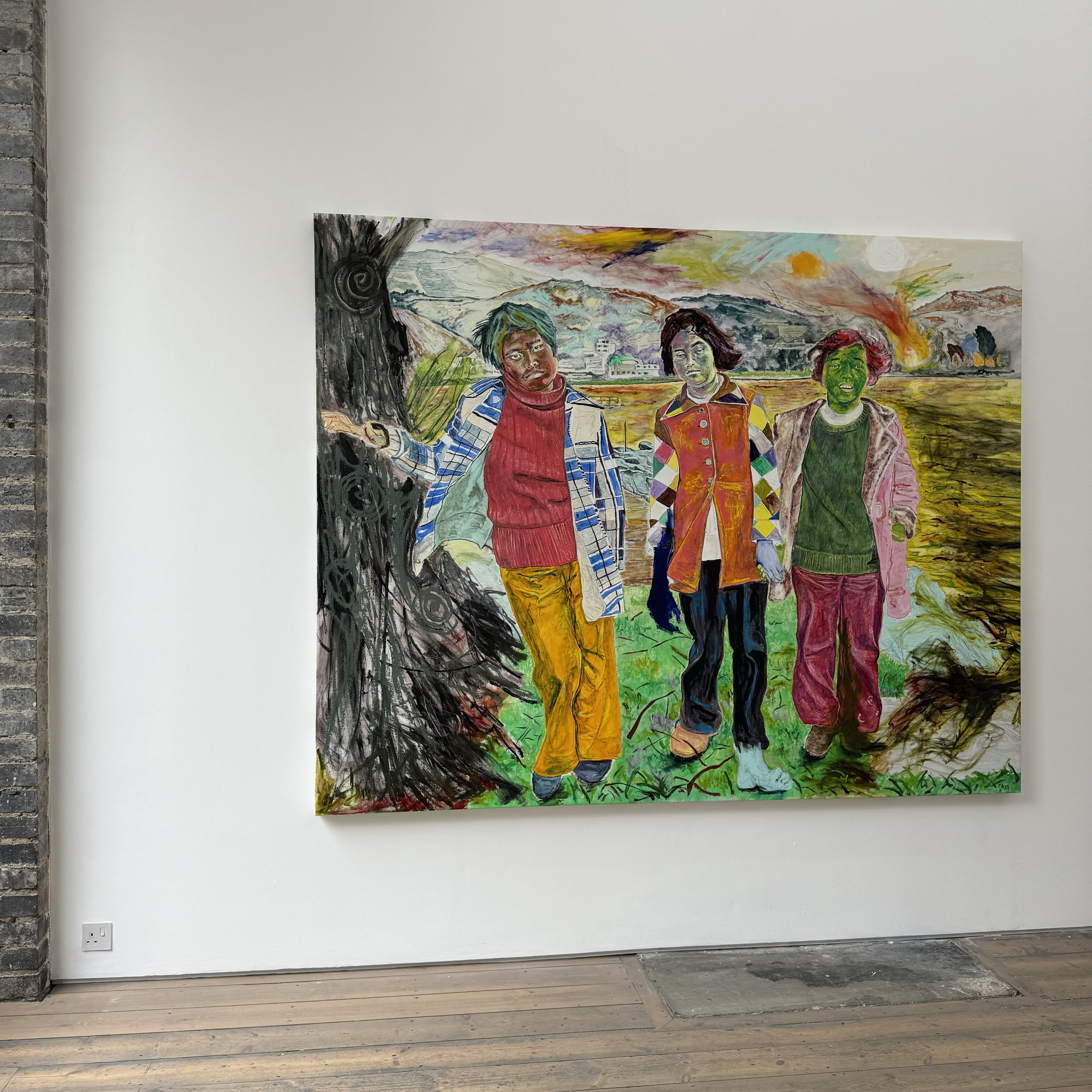
Who are all these jaundiced people? Oh, wait, there’s purple, green and blue ones too? With discoloured appendages and X’ed out eyes, it seems like I’m looking at a photo album from a post-human world. I’m drawn to these paintings, wondering who everyone is and why they look so strange.
The works are large. Some figures are life sized, which adds an extra level of eeriness to their appearance. The colouring is intense. Skin tones and clothing are pushed to heightened levels of vibrancy and saturation, but it’s the stark contrast of colours that draws my eye. Oranges against green. A red and white striped jacket. The thick impasto streaks of yellow hair layered over a crimson red head.
Were it not for the extreme colours I’d be inclined to say these are photorealistic, because the figurative details are too human, too precise, to have been thought up without reference. A closer examination of the works reveals pencil outlines. Many of them. They articulate both the borders of the forms and the details within. The marks give the colours a paint-by-numbers visual effect which is apt since the works are based on found photographs. Learning that made me wonder if these are people I should know or just random, unnamed individuals that will forever remain anonymous. It’s a bit of both.
Thirteen children on a playground wear 70s style fashion, but the artist has rendered them in vibrant, accentuated colours, including their faces and skin. It’s… unsettling. They don’t look natural and to be honest they freak me out. I would NOT want to come across them while walking home alone. They look pure evil, and that’s a reaction I’ll be embarrassed by and will explain later.
The playground, along with other innocuous settings like a farmyard or science lab, adds to the unease. Aside from the oddly coloured skin there’s nothing dystopian about the scenes. Figures pose in generic settings that could be anywhere, at any time. It’s the jumbled scribbles and scratchy lines, the blurring and transfigured features with a sometimes Frankenstein-effect, that renders everything horrifying. That’s the artist overwriting history, and he’s specifically chosen two distinct categories to depict.
The first are scientists that somehow had a hand in the destruction of health and the environment. Thomas Midgley was a chemical engineer whose patents include leaded gasoline and chlorofluorocarbons (CFCs). Fritz Haber was a German scientist dubbed the ‘father of chemical warfare’. The second category is vulnerable communities that were directly and negatively impacted by scientific progress. Specifically, the two paintings of children depict survivors of the Minamata chemical factory tragedy in Japan in 1968, and the Aberfan mining disaster in Wales in 1966.
I walked out of this show with a very different mindset than when I had entered. I was drawn in by my innate human curiosity about the ‘other’, cautiously questioning those differently coloured faces. I looked, I assumed, I judged and then eventually I took the time to listen and learn. Reading the back stories made me question my original visual bias. Those harmless old men in glasses and grandpa clothes, that I thought were naive innocents, have complicated legacies weighted down by their missteps. Whereas the children, as they almost always are despite appearances, turned out to be the victims all along. Why didn’t I see it all from the start?
Plan your visit
‘The Age of Effluence’ runs until 11 May.
Visit edelassanti.com and follow @edelassanti on Instagram for more info about the venue.
Visit the Artsy page and follow @farley_aguilar23 on Instagram for more info about the artist.
PLUS…
Check the What’s On page so you don’t miss any other great shows closing soon.
Subscribe to the Weekly Newsletter. (It’s FREE!)
